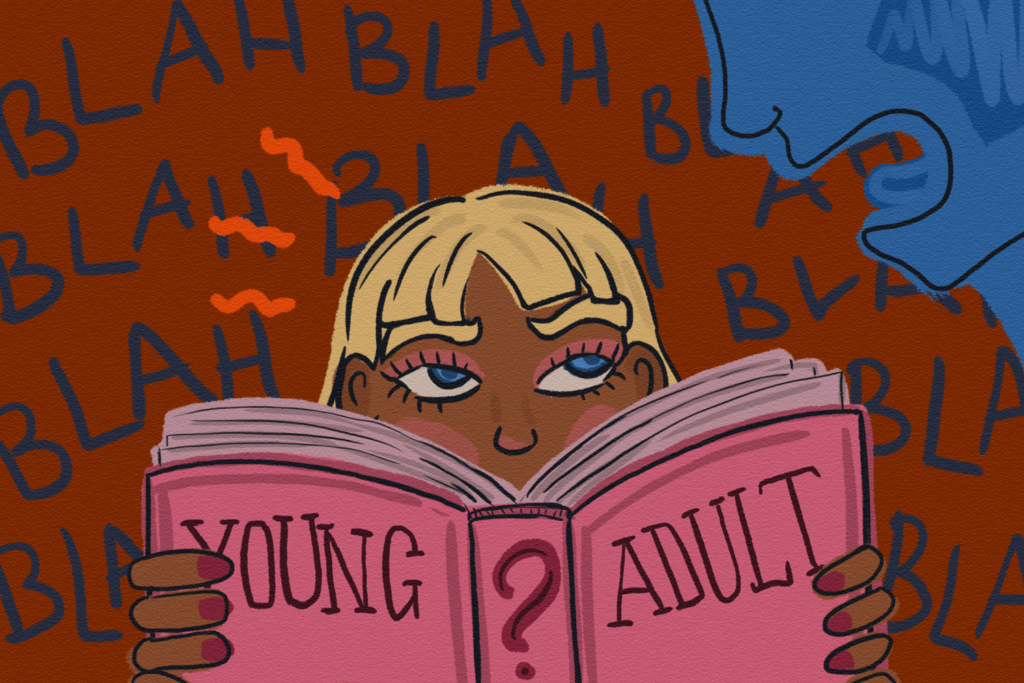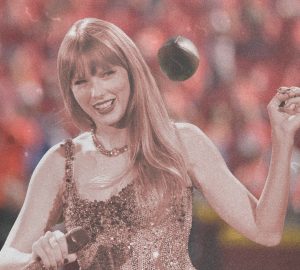By Ana Carrow

I’m no longer a teenager, but I enjoy reading young adult fiction. Admitting that sometimes feels like a crime, like something I should be ashamed of. There’s this overwhelming, unspecified stigma in the literary community: young adult isn’t “real literature.” It’s not serious enough, deep enough or dark enough — young adult doesn’t tackle “real issues,” affecting “real people.” The protagonists are most commonly teenage girls, and what do they know? Romance and cliché and teen drama often make up the bulk of these novels, and that’s not real life.
Except, that’s not entirely true. Young adult literature encompasses a variety of genres, characters, cultural backgrounds, and taboo topics, in both real and made-up worlds. These novels are usually the way teenagers crack open their narrow perspectives, a conduit for cultivating a love of reading. I know that’s the purpose they served for me, when I first started to dip my toes in the waters of young adult nearly a decade ago (I spot a cliché! The horror!). And the genre continues to be the category of books I fall back on as an adult whenever I’m in any sort of creative rut. In the eyes of these young protagonists, the world is wide open, full of opportunity, ready for the taking. There’s an inherent innocence that lies within those pages, a sense that many of us grow out of as we grow up. But the young adult genre allows us to reclaim it, if only temporarily, and that feeling is exhilarating, bordering on addictive.
Young adult literature crosses the boundaries of entertainment, proving itself to be seamlessly adaptable into other forms of media. The genre has transformed the film industry, starting with a little-known franchise called “Harry Potter” and blossoming into money-making machines like the “Twilight” and “Hunger Games” series. While this serial franchise format seems to be dying out as of late, young adult literature continues to bulldoze on, topping charts and influencing other mediums of entertainment. And yet, the stigma persists: it’s not real enough. It’s for kids. Look at those hordes of young girls, lining up for the midnight premiere of the newest teen romance — how immature.
No one bats an eye at the outrageous ticket sales for “Star Wars,” or the packed theaters of the latest Marvel film. Those are just fun flicks, action and adventure and flashy special effects all wrapped up into a two-and-a-half-hour special. Fun. No shame attached.
I don’t think it’s a coincidence that young adult literature — especially its romance — is dominated by women. The majority of the authors writing these novels are women, and the majority of readers are young girls. Adult women are usually frequent readers, like myself, but we’re not as vocal about it. Possibly due to the fear of backlash, of being told to grow up already and read some real books.
I can’t ignore the correlation; the literature most popular among girls and women is also the literature that’s taken the least seriously. But what’s so wrong about young adult literature? Is it a little too escapist? Too romantic? Too unrealistic? These same criticisms were hurled at Jane Austen’s novels, most famously by Mark Twain, and yet I don’t see as many TikToks dedicated to praising “Huckleberry Finn” as I do “Pride and Prejudice.” Escapism is timeless, cross-generational. The world has always sucked, and it likely always will. What’s so wrong about escaping into the head of a teenage protagonist, on the verge of saving the world or assassinating the king or simply falling in love? Everything’s available to that girl, as long as we keep turning the page.
I don’t want to be misconstrued. To clarify, when I say “escapism,” I don’t mean a blissful state of ignorance. In fact, I would argue that young adult literature is becoming less traditionally escapist and exploring more complex issues. Just in the past few recent years, we’ve had bestselling young adult books embracing LGBTQ+ leading characters, tackling systemic problems like racism and police brutality, showcasing love stories between characters of non-Western faiths and cultures, and a lot more. This isn’t to say that there isn’t additional work to be done. The genre isn’t without its faults or shortcomings. There have been calls for increased diversity, for increased representation, for increased publicity for POC authors and voices.
But in my idealistic, romantic, escapist mind (blame it on the books I read), I think we’re making progress. Whenever I step into the young adult section at a bookstore, I’m met with a range of stories to choose from, and the selection only diversifies each time I visit. I’m not a teenager anymore, but I love the genre — I love reading it, and watching it, and writing it — and I’m proud of that declaration. I like what I like, and, in all honesty, that shouldn’t really matter to anyone else but me.
Maybe that’s a lesson I picked up in one of those cheesy, girly books I love so much.


























